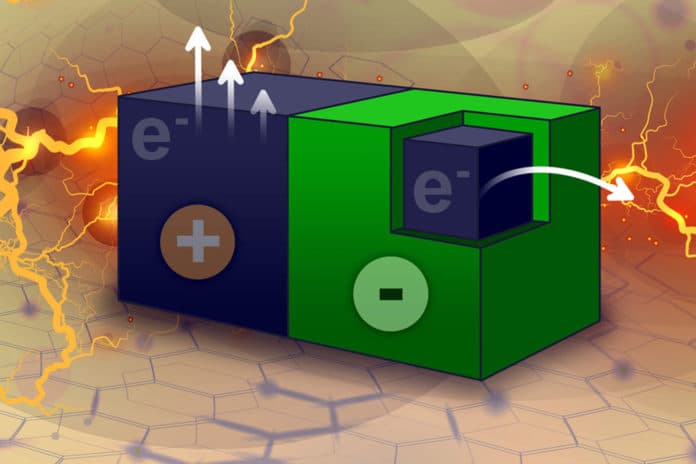MIT scientists have developed a new mechanism to generate energy in a completely new way. Their mechanism uses tiny carbon particles to generate electricity.
The particles create a current simply by interacting with liquid, an organic solvent surrounding them. It does so by drawing electrons out of the particles. The generated current could be used to drive chemical reactions or to power micro- or nanoscale robots.
In their study, scientists have shown that the electric current could drive a reaction known as alcohol oxidation.
Scientists used a Teflon-like polymer to coat part of a nanotube to create an asymmetry that makes electrons flow from the coated to the uncoated portion of the tube, generating an electrical current. Those electrons can be drawn out by submerging the particles in a solvent that is starving for electrons.
Michael Strano, the Carbon P. Dubbs Professor of Chemical Engineering at MIT, said, “The solvent takes electrons away, and the system tries to equilibrate by moving electrons. There’s no sophisticated battery chemistry inside. It’s just a particle, and you put it into the solvent, and it starts generating an electric field.”
Jun Yao, an assistant professor of electrical and computer engineering at the University of Massachusetts at Amherst, who was not involved in the study, said, “This research cleverly shows how to extract the ubiquitous (and often unnoticed) electric energy stored in an electronic material for on-site electrochemical synthesis. The beauty is that it points to a generic methodology that can be readily expanded to the use of different materials and applications in different synthetic systems.”
The particles were found to generate about 0.7 volts of electricity per particle. When arranged together, the particle acts as a packed bed reactor that produces enough energy to power a chemical reaction called alcohol oxidation. An alcohol is converted to an aldehyde or a ketone. Typically, this response isn’t performed utilizing electrochemistry since it would require an excessive amount of external current.
Zhang says, “Because the packed bed reactor is compact, it has more flexibility in terms of applications than a large electrochemical reactor. The particles can be made very small, and they don’t require any external wires to drive the electrochemical reaction.”
In the future, scientists hope to use this kind of energy generation to build polymers using only carbon dioxide as a starting material.
Strano said, “What we like about this mechanism is that you can take the energy, at least in part, from the environment.”
Journal Reference:
- Liu, A.T., Kunai, Y., Cottrill, A.L. et al. Solvent-induced electrochemistry at an electrically asymmetric carbon Janus particle. Nat Commun 12, 3415 (2021). DOI: 10.1038/s41467-021-23038-7
